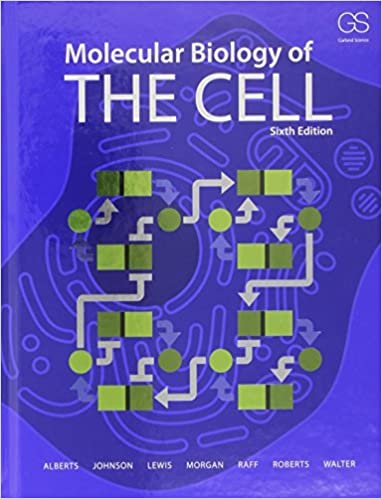
Molecular Biology Of The Cell 6th Edition by Bruce Alberts, Alexander Johnson, Julian Lewis, David Morgan, Martin Raff, Keith Roberts, Peter Walter
Edition 6ISBN: 978-0815345244
Molecular Biology Of The Cell 6th Edition by Bruce Alberts, Alexander Johnson, Julian Lewis, David Morgan, Martin Raff, Keith Roberts, Peter Walter
Edition 6ISBN: 978-0815345244 Exercise 9
It would be disastrous if a complement attack were not confined to the surface of the pathogen that is the tar- get of the attack. Yet, the proteolytic cascade involved in the attack liberates biologically active molecules at several steps: one that diffuses away and one that remains bound to the target surface. How does the complement reaction remain localized when active products leave the surface?
E. coli demonstrated that AID deaminates Cs to Us in DNA. The authors of the paper expressed AID in bacteria and followed mutations in a selectable gene. They found that AID expression increased mutations about fivefold above the background level in the absence of AID expression. More importantly, they found that 80% of the induced mutations were G→A or C→T. Does this fit with your expectation if AID-induced mutations arose by deamination of C to U in the DNA? [Hint: imagine what would happen if the G:U mismatch created by AID was replicated several times; how would the sequences of the final mutations relate to the original G-C base pair?]
E. coli demonstrated that AID deaminates Cs to Us in DNA. The authors of the paper expressed AID in bacteria and followed mutations in a selectable gene. They found that AID expression increased mutations about fivefold above the background level in the absence of AID expression. More importantly, they found that 80% of the induced mutations were G→A or C→T. Does this fit with your expectation if AID-induced mutations arose by deamination of C to U in the DNA? [Hint: imagine what would happen if the G:U mismatch created by AID was replicated several times; how would the sequences of the final mutations relate to the original G-C base pair?]
Explanation
From the given information, activation i...
Molecular Biology Of The Cell 6th Edition by Bruce Alberts, Alexander Johnson, Julian Lewis, David Morgan, Martin Raff, Keith Roberts, Peter Walter
Why don’t you like this exercise?
Other Minimum 8 character and maximum 255 character
Character 255


